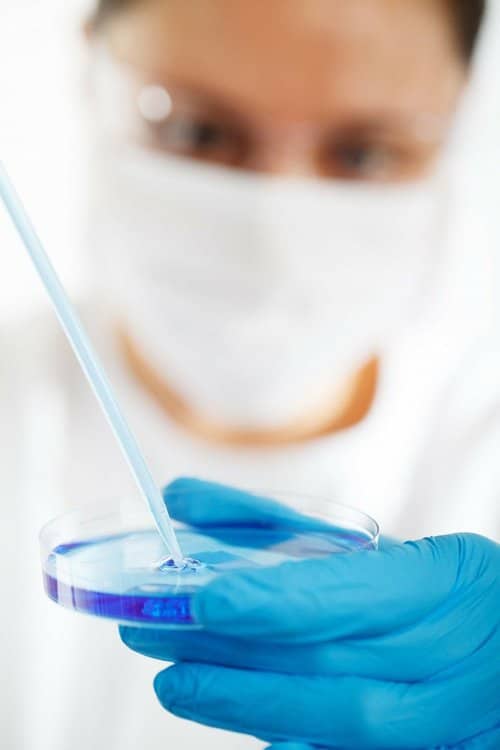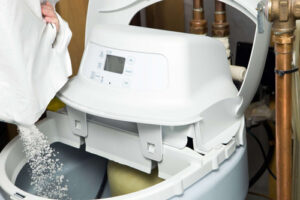Many dangerous chemicals take thousands of years or more to break down naturally. These “forever chemicals” could pose a huge danger to your health. Unfortunately, many of the forever chemicals are used in manufacturing and other industrial activities and sometimes make their way into our water supply.
Also known as PFAS chemicals, or per- and polyfluoroalkyl substances (PFAS), forever chemicals have emerged as one of the most discussed topics regarding drinking water. These man-made chemicals are commonly used in a whole host of products, including fire extinguishing chemicals, carpets, and paints, among other things. In total, there are more than 5,000 PFAS chemicals.
Forever Chemicals Are a Threat to Everyone
Why should you care about these chemicals? Some of them have been linked to cancer and may be carcinogenic. Even in small doses, PFAS chemicals may be bad for your health. These chemicals have been linked to delayed mammary gland development, increased cholesterol, and immune system toxicity. They also appear to affect the thyroid and liver.
And since they often last for thousands of years or more before breaking down, they could pose a threat for years to come. Many of the chemicals are odorless and tasteless, so your water might seem fine. However, the more you’re exposed to PFAS chemicals, the greater the risks.
You May Be Exposed to PFAS Chemicals
There’s a strong chance PFAS chemicals are in your body right now! A study found evidence of PFAS chemicals in 98% of blood samples drawn from across the country. Meanwhile, the Center for Disease Control has been conducting a lengthy, multimillion-dollar study on these chemicals and while the report hasn’t been released, the news looks grim.
Unfortunately, PFAS chemicals could be in your drinking water. It’s estimated that the drinking water of over 100 million Americans is contaminated with PFAS chemicals. While these chemicals are all but unavoidable, you can reduce risks be eliminating PFAS chemicals from your water.
Marylanders At High Risk
Unfortunately, PFAS are a serious risk in Maryland. Reports revealed the presence of PFAS (per- and poly-fluoroalkyl substances) in the drinking water near Fort Meade Army Base. These chemicals, which are known cancer-causing agents, are the main ingredients in AFFF fire-fighting foam, which is commonly used at military bases and airports until the US government began to phase out their use. PFAS have also been found in a Maryland creek, as well as a South Branch of the Potomac River in West Virginia and two different sites in Pennsylvania along the Susquehanna River. In addition, there exists concern that PFAS may have also contaminated the six-state Chesapeake Bay watershed because of their use prior to being phased out. This is quite disconcerting because AFFF contaminated water has been linked to serious health issues, asthma, liver diseases, cancer, and child development issues.
As alarming as this is, experts are just starting to dig into the issue. Quite likely, PFAS contamination is far more widespread. So far, PFAS chemical contamination has been uncovered in 43 states, including Maryland. As for the other states, PFAS contamination is likely but simply hasn’t been uncovered yet.
Further, while many municipal water authorities excel at killing off pathogens, PFAS contamination has proven more difficult to clean up. Even if your local water authority is trying to address the issue, success is far from guaranteed. That’s why many people are taking matters into their own hands and installing water filters at home.
Government Regulations With PFAS
Sadly, the American government has been slow to regulate PFAS chemicals. For decades, companies and other organizations were using PFAS chemicals with few restrictions. In recent years, the EPA has been working with companies to phase out and reduce the use of many PFAS chemicals but they are still common.
Even if regulations increase, the damage has already been done. PFAS chemicals are called “forever chemicals” for a reason. They don’t break down, at least not quickly. These chemicals are going to remain in the environment for centuries to come. That means your drinking water could be at risk, even if local companies and organizations have phased out using PFAS chemicals.
Maryland is a high-risk state for PFAS chemicals. However, you can mitigate risks by installing a water filtration system, such as the Hague WaterMax® City Filtration System. The right home filtration system can eliminate PFAS chemicals and other contaminants, while being more environmentally friendly and affordable than bottled water. Contact Hague Quality Water of Maryland today to get the water you deserve.




